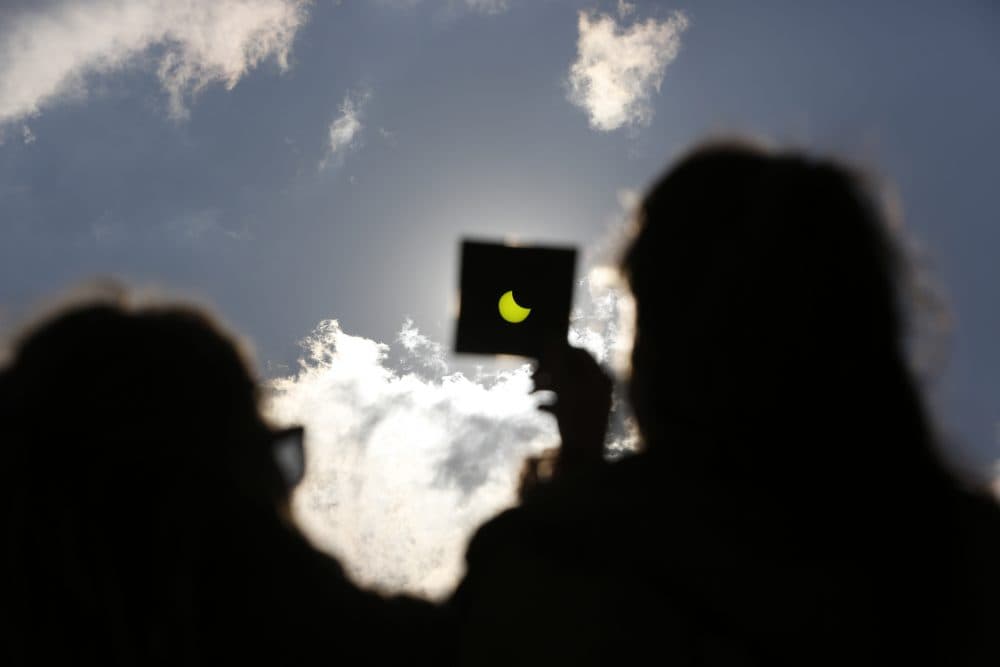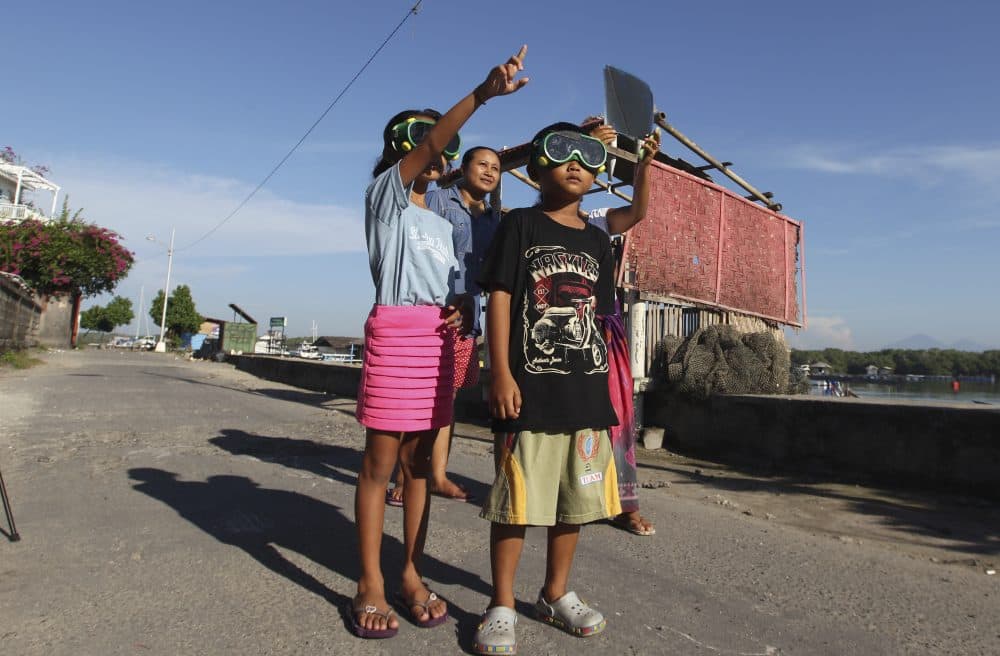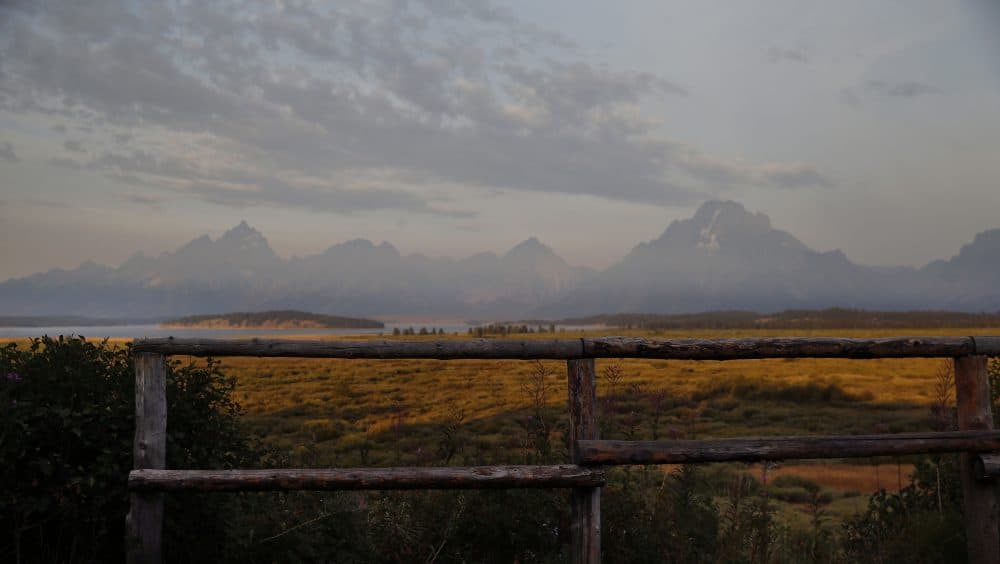Advertisement
Commentary
Howling At The Moon: Why I'm Taking My Children To See The Solar Eclipse

“I am an eclipse chaser.”
I say this as if introducing myself at a 12-step program. Lately, encumbered by parental responsibilities, I do my chasing in an armchair with a star chart, except now I’m preparing once again for physical pursuit.
A total solar eclipse is the most spectacular event in nature, and the one this August 21 will be the first in nearly 40 years to cross the continental United States. Millions will see it and I’m determined to haul my family across the country to be among them.
Eclipses evoked fear for ages before astronomers finally understood what they were. By coincidence, when viewed from Earth, the size of the sun and moon are almost identical. Occasionally, their paths cross and the moon completely blocks the sun. This is a total solar eclipse, which can last from seconds to a little more than seven minutes; it occurs almost every year or two in different places around the world.
Serious eclipse chasers travel frequently to widely separated locales, spending thousands of dollars to stand in the shadow of the moon. When I first decided to join their ranks, I had a choice: see this phenomenon from Siberia in the winter of 1997 — or the Caribbean a year later. That was a no-brainer. So I booked a tropical cruise for the eclipse of February 26, 1998.

My plane landed in St. Martin about a week before the event. Two days later I boarded the S.V. Polynesia, a four-masted schooner that would sail among the islands of the Lesser Antilles, eventually to wait off the island of Guadeloupe, mid-line on the path of totality.
The evening before the eclipse, the volcano on Montserrat was erupting and through my binoculars I saw glowing sparks thrown from the peak, falling languidly as if through molasses. But the sparks were red hot boulders the size of cars and distance created the illusion of slow motion.
By morning, a flotilla of ships had gathered in Guadeloupe passage. An ash cloud drifted above the slopes of Montserrat and we smelled sulfur in the air. Passengers from Polynesia boarded another ship, Legacy, which sailed to our final position on the center line: latitude 16 degrees 30 minutes and longitude -61 degrees 58 minutes.
An eclipse’s progress is marked by the instants when solar and lunar disks touch or separate, taking several hours from first contact at the beginning to fourth contact at the end. Totality would last a little more than three minutes and start about 2:30 in the afternoon, the exact time depending on location and calculated years in advance.
As we waited, our guide explained how to watch safely with eclipse glasses, which have cardboard frames like the glasses for old 3D movies. Instead of red and blue cellophane, however, the lenses are silvery, heavily metalized mylar which blocks almost all light.
Then someone called out, “First contact!” I put on my eclipse glasses and saw a dim, gray sun through the reflective film. One side had an almost undetectable nibble taken out of it. Over an hour and a half, that nibble became a bite that grew larger as the moon encroached more and more. Darkening the waters, an immense shadow raced toward us moments before totality. Bright sky turned to twilight and we saw Polynesia bob in the middle of a circular sunset reddening the horizon.
For three minutes we howled like wolves and wished it would never end.
“Second contact!” A dragon swallowed the sun, as the ancient Chinese described it, and totality began. “Glasses can come off,” said our guide. This is the only time — when the sun is completely covered — to safely watch an eclipse with naked eyes. We erupted with jumping and shouting, tears flowing from those overcome by that hole in the sky. It was a perfect circle, black beyond description, surrounded by a pearly corona glowing against deep purple night. I took a quick series of photographs then set down my camera and cheered. And cheered. For three minutes we howled like wolves and wished it would never end.
“Third contact!” The sun peeped around the moon’s trailing edge and totality ended. “Glasses on! Now!” shouted the guide. Intense light burst from a single point then flowed into an arc around the silhouette of the moon — the diamond ring effect — as daylight returned.
“Fourth contact.” An hour and a half after totality, the moon slid completely off the sun and the eclipse was over.

That was nearly 20 years ago. I’ve since married and now have two children. The travel fund became the furniture fund, then the college fund. Somewhere the negatives of that eclipse sit rolled in a canister, not lost but also not found.
Eclipse chasing is a sport I can pursue only infrequently, yet I still read brochures for tours I may never take and imagine the eclipses I missed, especially those of 1999 (United Kingdom), 2001 (Zimbabwe) and 2010 (Easter Island).
But now I am ready again. I want my daughters to experience the world unmediated by a screen, whether television, iPad or smartphone. They are 7 and 12 this year, old enough to remember a total eclipse for the rest of their lives. This summer our family will journey to Yellowstone to see Old Faithful, and bison and elk and maybe a wolf roaming free. I want them to run through prairie grass bending in the wind. I want them to know silence broken only by bird calls.
Then, on the morning of August 21 we will drive past the Grand Tetons and stop among crowds searching the sky. For me it is more than that exaltation from a magic alignment. It is the return to an elemental state, a return to wildness, a howling at the moon.
